
 Nestronics
Nestronics

 Nestronics
Nestronics
Having the ability to measure Dementia/Alzheimer's changes is important to be able to evaluate if any treatment is having an effect.
Here we present a finger tap jig designed with the objective of measuring reaction times, and how they change over time.
The theory being that reaction times, accelerations and finger control will change/degrade as dementia progresses.
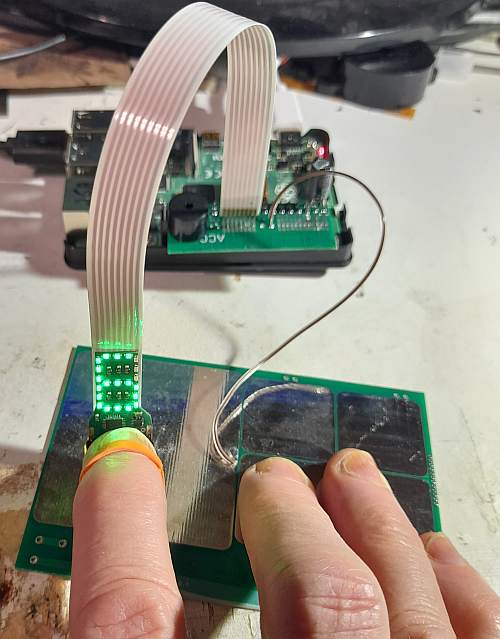
A summary of the test is presented: 2023-03-08.08:51:32 Trial# usec 5 219589 4 207378 3 191499 2 205607 1 176434 Mean(ms) SD(ms) TOTAL PULSE(ms): 153.973 17.187 HIGH PULSE(ms): 107.417 19.8879 LOW PULSE(ms): 46.555 13.7601 Total Count= 89 Total Time(s) 13.7036
The test results are saved to a file for optional further analysis.
sample.csv download .
The saved file has detailed accelerometer results that can be used for analysis.
Here is an example of some of the plotted data.
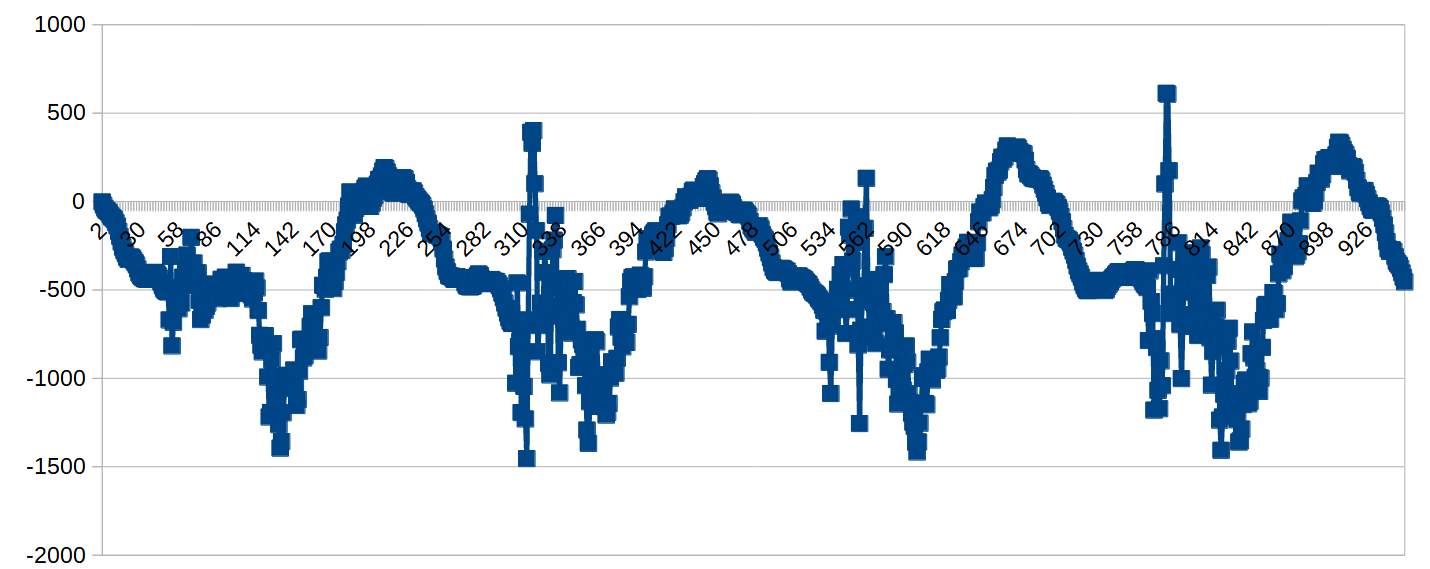
The actual jig that attaches to the finger is light weight, and contains an accelerometer.
The finger jig attaches to Raspberry Pi via a flex cable using an SPI interface.
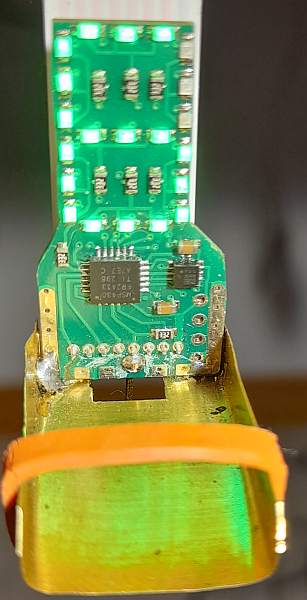
The raspberry pi has a small printed circuit board with a connector to simplify the connection to the finger jig.
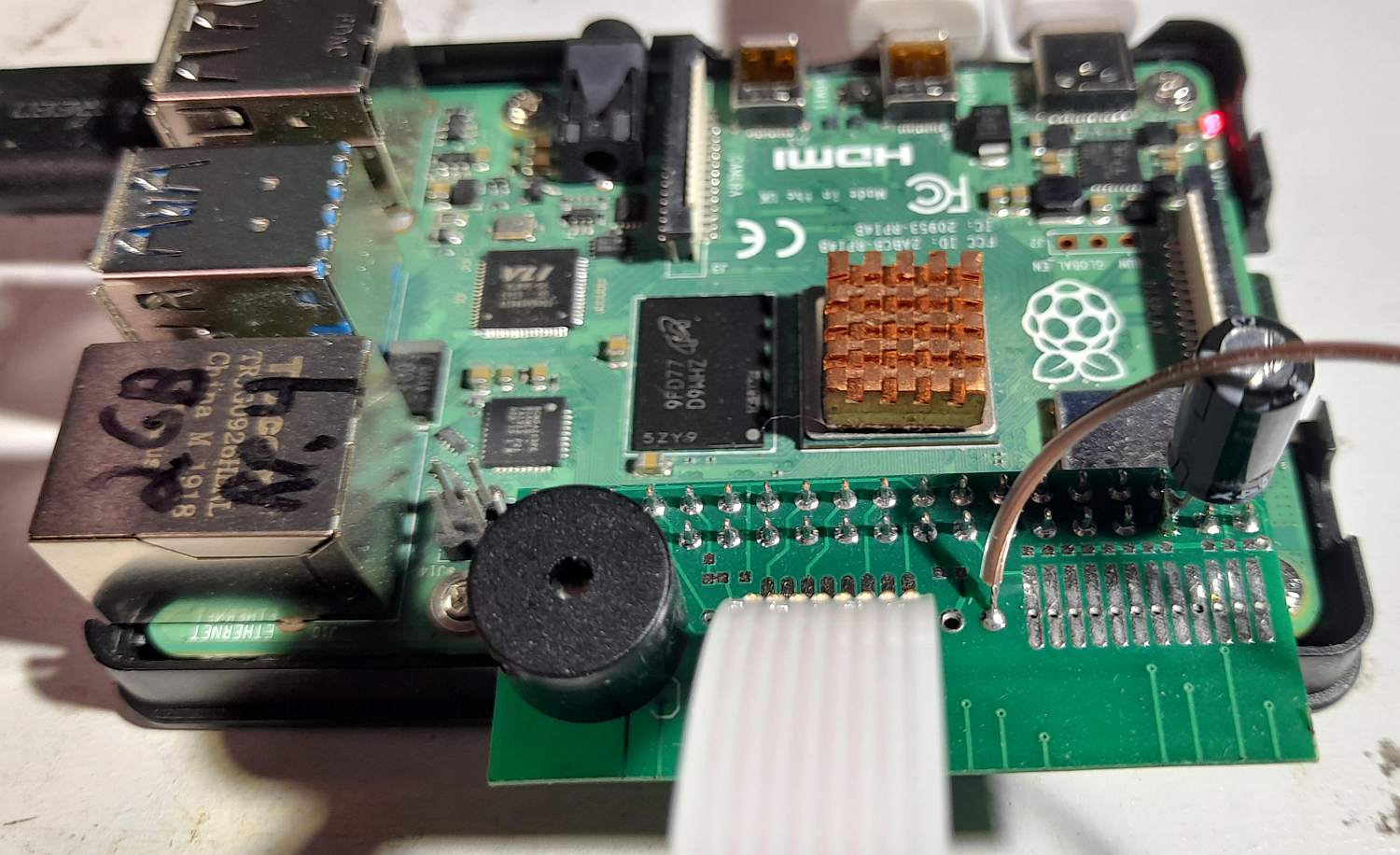
A Texas Instruments programming jig is used to program the MCU (Microprocessor) on the finger jig, using a USB
interface to a computer running the free application CSS (Code Composure Studio). The code is written in c++.
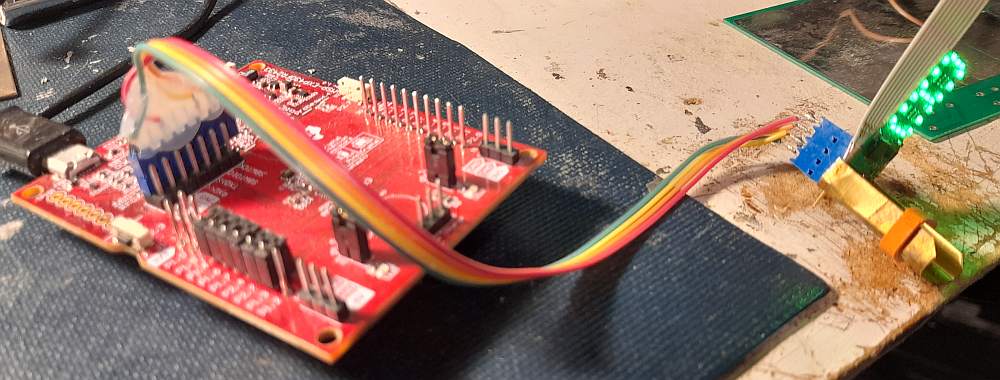
The code for the finger tap jig is written in c++.
firmware download main.cpp for the MSP430RF2433
The Raspberry Pi also has software also written in c++. It needs to be placed in the /home/pi directory and complied.
software download pbm2.cpp for the Raspberry Pi
The gerber files for getting the PCB made for the finger tap board and connector board can be downloaded
here. You will need to cut them manually to seperate them. I use a scroll saw.
The part placement can be downloaded
here.
The parts are: 21 0603 LEDs 8 3300 ohm 0603 chip resistors 2 - 1uF 0603 chip capacitors 1 - MSP430FR2433 microprocessor 1 - LIS2DH12 accelerometer
The gerber files for getting the PCB made for the board that is tapped on is
here, but you do not need it. You can just use a blank board or other metal sheet.
Here is a video of the unit in operation. There are 2 tests that it does.
1. A reaction time test. You must lift your finger when the 8 appears. This is repeated 5 times.
2. 2nd step is a speed test, where you must try to tap as fast as you can for 15 seconds.